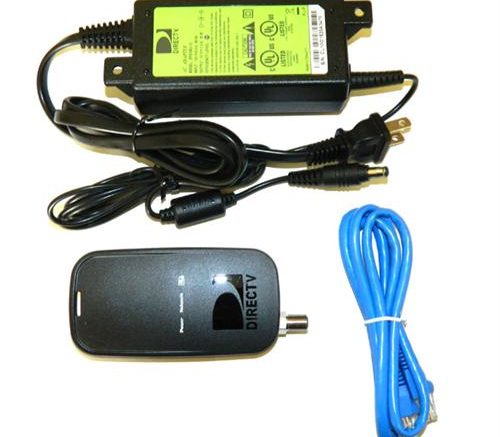DIRECTV’s sent you a message with its H25 receiver and Genie Mini Clients. Wired Ethernet, it would seem, is a thing of the past — neither product has the familiar RJ45 port for Ethernet networking. Both rely solely on the coax cable to deliver both web-enabled and satellite-based content, and most people are just fine with that. Our Guide to Coax Networking tells you all about this new technology and how it can deliver internet content to any room with a coaxial cable.
But all things considered, Ethernet is a pretty good technology… why did DIRECTV see the need to go a different way? The obvious answer is that most homes don’t have Ethernet cabling in every room, and Wi-Fi wasn’t really reliable enough until just a year or so ago. There’s a little more to it though…
Ethernet was designed to be a high-latency, error-correcting way of getting information from place to place. In other words, Ethernet is more concerned that you get every word right compared to making sure you get the whole sentence as fast or as smooth as possible. If an Ethernet card finds a mistake, it goes back and asks again and doesn’t care how long it takes.
On the other hand, television is designed to be a low-latency, error-tolerant way of getting information from place to place. You need to send 60 frames every second and if one of them is a little wrong, so be it… time to move on. Little errors disappear over time with TV and you don’t think about them unless they pile up enough to cause interference.
This makes Ethernet a pretty poor way to get audio and video from place to place. Plenty of services like Netflix and YouTube use it — they get around the problems with Ethernet by buffering their programs for a few seconds so they can always give you a nice smooth picture. Satellite TV customers don’t want programs that are 30 seconds or more later than live — just the time taken putting the signal up to a satellite and getting it back down takes about 7 seconds and that’s a lot by itself. So, DIRECTV wanted a solution that didn’t add buffering time to the process.
By the way, it’s not about the wire itself — Ethernet traveled over coax cables for over a decade before it started using “category cables” in the 1980s.
They settled on MoCA, the networking standard developed by the Multimedia over Coax Alliance, which networks two devices in a super-smooth stream designed to ignore errors and keep the information flowing. That’s perfect for what DIRECTV needs to do with its whole-home DVR products. Companies like Verizon and DISH use MoCA too, for the same reason.
This leads to the question, “what about the little ethernet cable between a DECA and an older receiver?” The truth is that a short, point-to-point ethernet cable isn’t going to be a problem unless it’s very worn. The problems come when you have 30 or 40 ethernet devices in your home (you probably do, if you count them) and all that information is just swarming around.
So… coax networking. It’s worth checking out. For now DIRECTV still has products with Ethernet ports, but they’d rather you didn’t use them. They have a good reason.





